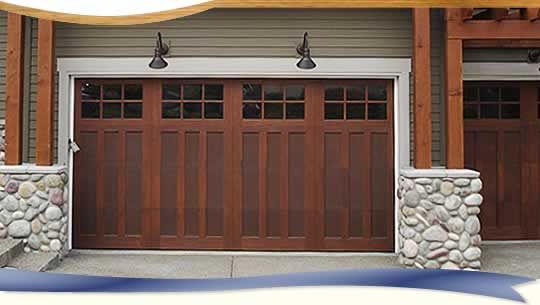Your garage door is a vital component of your home. It provides security, convenience, and curbs appeal. However, like any mechanical system, it requires regular maintenance to ensure it operates smoothly and remains trouble-free. To help you keep your garage door in top condition, here are some common maintenance issues and how to address them.

- Lubrication: One of the most common issues is a noisy garage door. This can often be attributed to inadequate lubrication. Garage door components, such as rollers, tracks, and hinges, should be well lubricated to reduce friction. Use a high-quality silicone or lithium-based garage door lubricant to keep these parts running smoothly. Apply lubricant at least twice a year to prevent wear and tear.
- Tighten Hardware: Over time, the constant movement of the garage door can cause nuts, bolts, and screws to loosen. Regularly inspect the hardware and tighten any loose parts using a wrench. Pay particular attention to the roller brackets, which can become loose and affect the door’s balance.
- Inspect and Replace Weather Stripping: Weather stripping around the garage door helps keep out drafts, water, and pests. If you notice cracks, tears, or signs of wear on the weather stripping, visit the website replace it promptly. Proper weather sealing not only improves energy efficiency but also prolongs the life of your garage door.
- Clean and Maintain Tracks: The tracks on which your garage door rollers move can accumulate dirt and debris over time. Regularly clean the tracks using a brush and a mild household cleaner. Inspect the tracks for dents, bends, or misalignment. If you notice any significant damage, contact a professional for repair, as it can affect the door’s operation.
- Test Safety Features: Garage doors are equipped with safety features, including photo-eye sensors that prevent the door from closing on an object or person in its path. Periodically test these safety features by placing an object in the door’s path. If the door does not reverse when it encounters an obstruction, it may indicate a sensor issue that requires professional attention.
- Balance the Door: An imbalanced garage door can put stress on the opener and other components, leading to premature wear and tear. To check the balance, disconnect the opener and manually lift the door halfway. If it doesn’t stay in place or falls, the door is likely unbalanced. Adjusting the spring tension should be done by a professional to avoid safety risks.
- Check Cables and springs: The cables and springs are critical components of your garage door’s lifting mechanism. Inspect them for signs of wear or fraying. If you notice any issues, do not attempt to repair them yourself, as they are under high tension and can be dangerous. Contact a qualified technician for spring or cable replacement.
